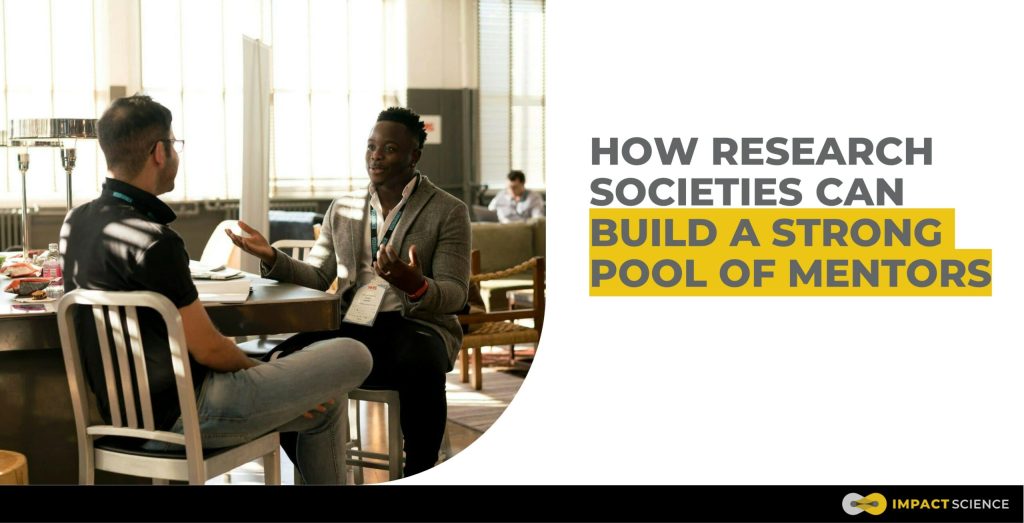Mentorship in STEM research is more than mere supervision. A research advisor or guide could serve as a mentor, but mentorship delves deeper, offering a wider range of benefits. It’s a dynamic, two-way street of collaboration, fostering growth in the mentee through a blend of psychosocial and career support, instilling the confidence to navigate challenges.
The formal training that all research students go through falls short of equipping them for the full spectrum of a skills that a career in science entails. Mentors bridge this gap, providing crucial guidance in management, finance, communication, networking, and more. They also inspire, offer scientific guidance, and introduce their mentees to valuable collaborations, ultimately enhancing student outcomes and retention.
However, finding the perfect one-size-fits-all mentor is often a challenge. Students and early career researchers, with their unique strengths and needs, benefit from a tapestry of mentors with diverse perspectives and insights, through interactions that can range from brief encounters to lifelong partnerships. Finding mentors who perfectly matches a scholar’s needs can be challenging, especially within their home institution or local area.
Research societies, with their vast pool of experts, can bridge these gaps by matching inexperienced researchers with experienced mentors from across the globe. Furthermore, research societies hold significant influence in the form of sponsorship opportunities like visibility, awards, leadership roles, and visiting professorships. This power presents a unique opportunity to reshape how mentorship and sponsorship are handled in STEM research.
By engaging equity-centered networks and fostering a culture of mentorship within disciplines, research societies can drive large-scale, inter-institutional change. And it is all a strategic investment considering that the organization benefits too. Investing in these mentoring programs unlocks a multitude of benefits for scientific associations, boosting member experience, fostering intra-society collaboration, strengthening diversity and outreach efforts, ultimately fortifying the discipline and enhancing their brand image.
Strategies to Attract Mentors
Craft evidence-based mentorship programs with structured frameworks
Mentorship scopes and program structures can differ with respect to objectives, career stages, and durations, communication channels, etc. Existing programs illustrate this diversity – take for instance ICC’s six-month initiative or the Botanical Society of America’s travel and mentorship awards or the Society for Mucosal Immunology’s three-year scientist pairings. Ultimately, the society’s unique objectives and resources will help shape the ideal program structure and type.
In fact, offering multiple program types with distinct focuses and formats can attract a broader mentor pool. The Society of Hispanic Professional Engineers (SHPE), for instance, provides three distinct mentorship options while the German-Syrian Research Society (DSFG) provides many more options.
Regardless of the specifics, however, the core principles should remain constant: measurable outcomes, a structured approach driven by evidence-based practices, and data-driven feedback for continuous evaluation and refinement.
Emphasize the benefits of such programs for mentors
While mentoring offers the intangible satisfaction of inspiring the next generation, ‘paying it forward’, and actually making a difference in someone’s academic life, mentors also do reap tangible benefits. They sharpen their teaching and leadership competencies, hone their communication and interpersonal skills, forge valuable connections through their mentee’s network and potentially attract future collaborators – all while adding that one extra section to their CV.
Incentivize outstanding mentorship through dedicated awards and recognition programs
Mentorship takes serious skills, time, effort, resources, and recognizing and rewarding this can significantly boost motivation and participation. Look to the Orthopaedic Research Society, Research Society on Alcoholism, American Physical Society, and Infectious Diseases Society of America, as a few examples that offer dedicated awards to celebrate exceptional mentors.
Refine existing programs to prioritize effective mentorship
Societies that offer grants could also strive to ensure that all research proposals that involves training students or researchers include a robust and evaluated mentoring plan as part of the proposal.
Implement targeted outreach initiatives
Amplifying the program’s visibility through email newsletters, strategic website advertising, engaging social media campaigns, and leveraging professional networks, can attract qualified mentors. Furthermore, empowering past mentees to in turn become mentors who can offer support and expertise to their juniors or near-peers, facilitates a self-sustaining ecosystem of guidance. In fact, dedicating a team to oversee the program with roles that include cultivating relationships and engaging with prospective mentors can help expand the reach.
Fostering a Supportive Ecosystem for Mentorship
Recruiting new mentors is crucial, but retaining existing ones ensures program sustainability. Optimizing the entire mentorship experience is thus vital.
Matching well: Pairing mentors and mentees based on compatibility, research interests, and personality fosters effective and satisfying collaborations. For minorities, teaming up mentor-mentees from similar backgrounds can further enhance the experience.
Cultivating a culture: Embedding mentorship within the research society, extolling its value, encouraging participation, and making it integral to the society’s identity, sustains the ecosystem.
Equipping mentors: Offering dedicated training resources, like American Society of Nephrology and American Psychological Association do, or even collaborating with other institutes that provide this (such as CIMER) can improve the mentorship experience for the mentor and the protegee. For instance, leveraging CIMER’s expertise, the American Physical Society launched an initiative called Advancing Graduate Leadership to propel women and non-binary postdocs into physics leadership roles. Such training should also include modules on safe and inclusive relationship building, and navigating power dynamics and biases.
Continuous improvement: A reliable feedback system that assesses and informs program adjustments can ensure a thriving mentorship ecosystem. Funding bodies could also incentivize mentorship by incorporating it into grant proposals, encouraging senior researchers to mentor early-career colleagues.
Conclusion and Future Directions
Mentoring in STEM is a high-stake, potent, relationship, with the potential to make or break a student’s career in science. A positive mentoring interaction can help mentees see themselves through the eyes of experienced mentors, find their place in the academic landscape, and chart a confident course for the next stage in their careers. Yet, despite its profound impact, mentorship often receives less focused attention, evaluation, and recognition than other academic responsibilities like teaching or research. This critical role should not be left to chance or unmethodical implementation. Research societies are uniquely positioned to step in and cultivate a thriving mentorship ecosystem, ensuring that every promising STEM mind has access to the support they deserve. And it would be a gamechanger for all research societies to capitalize on this immense potential.









